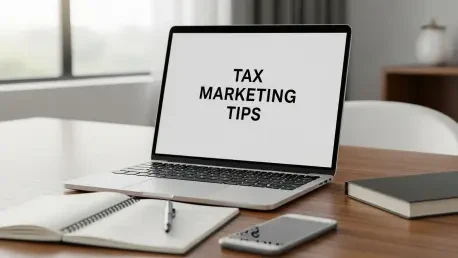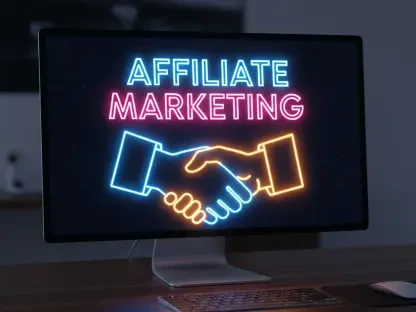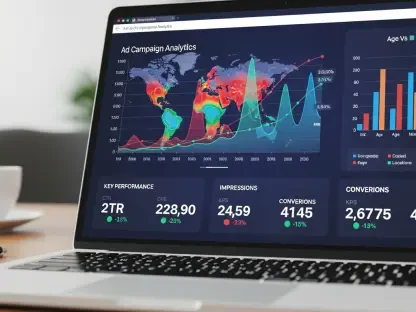The end of the year often brings a flurry of activity for businesses and individuals alike, with tax deadlines looming amidst holiday chaos, creating a unique opportunity for accounting firms to capture attention and build lasting client relationships. For accounting firms, this period presents a golden opportunity to connect with clients who are actively seeking guidance on deductions, policy changes, and financial planning. A well-executed marketing strategy can position a firm as the go-to expert in this critical time. This guide aims to equip accounting professionals with actionable strategies to differentiate their services and maximize engagement during the year-end rush.
The purpose of this resource is to provide a comprehensive roadmap for crafting impactful year-end tax marketing campaigns. By blending traditional methods with cutting-edge digital tactics, firms can address immediate client needs while laying the groundwork for a robust tax season. The importance of standing out cannot be overstated—clients are bombarded with information, and a strategic approach ensures a firm’s message cuts through the noise. From compelling email content to interactive webinars, the following steps offer a clear path to success.
This guide is designed to help accounting firms not only attract new leads but also strengthen ties with existing clients. Each strategy focuses on delivering value, building trust, and creating memorable interactions. Whether targeting small business owners or individual taxpayers, the outlined tips cater to diverse audiences with practical, timely advice. Dive into these methods to transform the year-end period into a powerful platform for growth and visibility.
Capturing Attention in the Year-End Tax Rush
As the calendar winds down, clients find themselves balancing holiday preparations with pressing financial concerns. This unique intersection of personal and professional priorities creates a window for accounting firms to make a significant impact. By addressing tax-related anxieties with targeted messaging, firms can position themselves as indispensable allies during a hectic season. The challenge lies in breaking through the clutter of seasonal promotions and distractions to deliver meaningful content.
Effective marketing at this time hinges on understanding client pain points, such as maximizing deductions or navigating new tax legislation. A firm that offers clarity and actionable solutions can quickly become the trusted resource clients turn to for guidance. Beyond immediate needs, this period also allows for showcasing expertise, which fosters loyalty well into the next tax cycle. The strategies ahead are tailored to seize this moment with precision and creativity.
The year-end rush is not just about meeting deadlines; it’s about building a narrative that resonates with clients on a personal level. Highlighting how a firm can alleviate stress or uncover savings transforms a routine service into a vital partnership. With the right approach, this season becomes less about competition and more about connection, setting the stage for long-term success in a crowded market.
Why Year-End Tax Marketing Is a Game-Changer
The final months of the year hold distinct significance for tax-related outreach, as financial planning takes center stage for many. Clients, whether individuals or businesses, are keenly aware of impending deadlines and potential savings opportunities. This heightened focus makes them more receptive to expert advice, providing firms with a chance to demonstrate value through timely communication. Capitalizing on this mindset can yield immediate engagement and future referrals.
Beyond short-term gains, year-end marketing establishes a foundation of trust that extends into the following year. When clients receive relevant, helpful information during a high-stress period, they are more likely to view the firm as a reliable partner. This is particularly true when addressing complex updates, such as changes under recent tax laws like the One Big Beautiful Bill Act (OBBBA), which may impact deductions and planning strategies. Such efforts reinforce a firm’s role as an essential advisor.
Moreover, standing out during this period can create a ripple effect, attracting new clients through word-of-mouth and enhanced visibility. A strategic campaign that resonates emotionally and practically can differentiate a firm from competitors who rely on generic messaging. The ability to address urgent concerns with tailored solutions turns a seasonal push into a powerful tool for sustained growth and recognition in the industry.
5 Innovative Strategies to Elevate Your Tax Marketing
Strategy 1: Craft Compelling Stories in Client Emails
Email remains a cornerstone of client communication, but the key to effectiveness lies in moving beyond standard updates. By weaving storytelling into messages, firms can create a deeper connection with their audience. For instance, sharing a narrative about a client who saved significantly through strategic planning under new tax rules can illustrate real-world benefits. This approach makes the content relatable and prompts recipients to consider their own situations.
A specific example could highlight a business owner who capitalized on OBBBA depreciation benefits by timing equipment purchases before December 31. Describing the scenario—perhaps a $15,000 savings—alongside a brief explanation of the rule, adds credibility and urgency to the message. Such stories not only inform but also inspire action by showing tangible outcomes that clients can aspire to achieve with the firm’s guidance.
To enhance accessibility, embedding direct scheduling links within these emails is crucial. A “Book Now” or “Schedule a Call” button connected to a booking tool removes barriers to engagement, allowing clients to act immediately on the advice provided. This combination of emotional resonance through storytelling and practical ease ensures that the communication drives results, turning a simple email into a powerful conversion tool.
Strategy 2: Grab Attention with Social Media Micro-Content
In an era of rapid digital consumption, brevity and visual appeal are paramount on social media platforms. Short, punchy content that delivers quick tax tips can capture attention amidst endless scrolling. Platforms like LinkedIn or Instagram offer ideal spaces to share concise advice, such as a post on OBBBA deductions for business vehicles, ensuring the message is both relevant and digestible for busy clients.
Visual creativity can further elevate these posts, making them stand out in crowded feeds. Consider using black-and-white imagery with bold, colored text or unique illustrations to break the monotony of standard graphics. These distinctive elements can stop viewers mid-scroll, encouraging them to absorb the tip and engage with the content through likes, shares, or comments, thus amplifying reach organically.
Additionally, maintaining a conversational tone and avoiding complex jargon fosters accessibility and interaction. A 30-second Instagram Reel outlining “3 Year-End Tax Moves” with clear captions can invite followers to ask questions or share their thoughts. This approach not only educates but also builds a community around the firm’s expertise, enhancing visibility and client connection during a critical period.
Strategy 3: Build Authority with a Year-End Blog Series
Long-form content through blogs offers a platform to establish thought leadership while boosting online presence via search engine optimization. A multi-part series released weekly through November and December can keep a firm top of mind during the year-end rush. Topics such as “5 Smart Tax Moves Before December 31” provide in-depth insights that address immediate client concerns with practical, actionable advice.
Diving deeper into specific legislation, such as the implications of OBBBA for businesses, can further showcase expertise. By breaking down complex rules into clear examples—like how bonus depreciation applies to new equipment—blogs can demystify tax planning for a wider audience. This detailed approach not only educates but also positions the firm as a knowledgeable resource for navigating intricate financial landscapes.
Each blog post should conclude with a strong call-to-action to drive engagement. Phrases like “Download the Tax Planning Guide” or “Book a Year-End Consultation” encourage readers to take the next step toward collaboration. This strategic closure transforms passive readers into active clients, maximizing the impact of the content and reinforcing the firm’s role as a trusted advisor.
Strategy 4: Connect Directly via a “Tax Talk” Webinar
Webinars provide a dynamic way to blend education with personal interaction, fostering stronger client relationships. A 30-minute session on “Year-End Tax Planning Under OBBBA” can deliver valuable insights while allowing for real-time engagement through a Q&A segment. Structuring the event with 20 minutes of content and 10 minutes for questions ensures a balance between information delivery and audience participation.
Promoting the webinar through multiple channels, such as email reminders and social media announcements, can maximize attendance. Following the event, repurposing key highlights into bite-sized social media posts or infographics extends the content’s lifespan and reach. This multi-use strategy ensures that even those who couldn’t attend live can benefit from the shared knowledge, broadening the firm’s impact.
The direct connection offered by webinars also humanizes the firm, as clients interact with professionals in a live setting. This format allows for addressing specific concerns on the spot, building trust and credibility. By focusing on relevant, engaging topics, such events become a cornerstone of a firm’s year-end outreach, creating lasting impressions among attendees.
Strategy 5: Merge Print and Digital for a Personal Touch
While digital marketing dominates, traditional print materials still hold value, especially for local or long-standing clients. Sending a printed postcard with “Top 3 Year-End Tax Tips” can serve as a quick, tangible reminder of a firm’s services. Including a QR code that links to an online booking form bridges the gap between physical and digital, offering a seamless way for clients to take action.
Another effective tactic involves branded holiday cards that blend festivity with business intent. A personalized message coupled with a subtle postscript about a year-end tax review offer adds warmth without overt selling. This thoughtful touch can resonate emotionally with recipients, reinforcing the firm’s commitment to client relationships during a celebratory time.
Combining these print efforts with digital follow-ups ensures a cohesive strategy that caters to diverse preferences. The tactile nature of print can leave a lasting impression, while digital links provide immediate access to services. Together, these elements create a well-rounded approach that enhances visibility and fosters a sense of personal connection with the audience.
Quick Recap: Key Year-End Marketing Tips
- Tell Stories in Emails: Leverage relatable case studies and include scheduling links to prompt client action.
- Leverage Social MediDevelop short, visually striking posts or videos with actionable tax advice.
- Publish Blogs: Establish authority through a multi-part series with compelling calls-to-action.
- Host Webinars: Engage clients with live sessions and repurpose content for wider distribution.
- Blend Print and Digital: Use postcards and holiday cards with digital integrations for a personalized impact.
Looking Ahead: Trends and Challenges in Tax Marketing
As the tax landscape evolves, marketing strategies must adapt to emerging technologies and shifting client expectations. Tools leveraging artificial intelligence for content creation are becoming integral, streamlining the production of tailored messages. Meanwhile, video content and interactive formats continue to dominate engagement, offering fresh ways to connect with audiences in an increasingly digital world.
However, challenges persist in balancing personalization with scalability, especially as privacy regulations become stricter. Firms must navigate these constraints while ensuring communications remain relevant and compliant with new tax laws like OBBBA. Staying agile in response to such changes is essential to maintain trust and effectiveness in outreach efforts over the coming years.
The dynamic nature of client needs also demands ongoing innovation in how firms present their expertise. Exploring new platforms and formats, while keeping a pulse on regulatory updates, will be crucial for sustained relevance. By anticipating these trends, firms can position themselves as leaders, ready to tackle future obstacles with confidence and creativity.
Final Thoughts on Year-End Tax Marketing Success
Reflecting on the strategies implemented during the year-end rush, firms likely found that a blend of storytelling, digital innovation, and personal touches yielded significant engagement. Each step, from crafting compelling emails to hosting interactive webinars, played a vital role in strengthening client connections. These efforts not only addressed immediate tax concerns but also built a foundation of trust that carried forward.
Looking back, the integration of print and digital elements probably stood out as a unique way to reach diverse audiences. Moving into the next phase, firms should consider analyzing which tactics resonated most with clients to refine future campaigns. Gathering feedback on webinar attendance or email open rates could provide valuable insights for improvement.
As a next step, planning for the upcoming tax season with lessons learned from this period is essential. Exploring additional tools or partnerships to enhance outreach, while staying updated on legislative changes, will ensure continued success. By maintaining momentum and adapting to client feedback, firms can position themselves for even greater impact in the months that follow.









